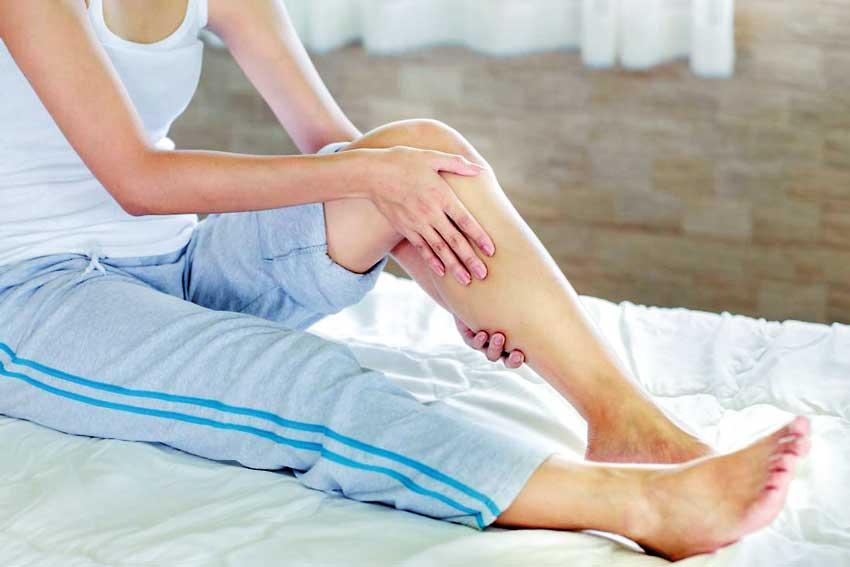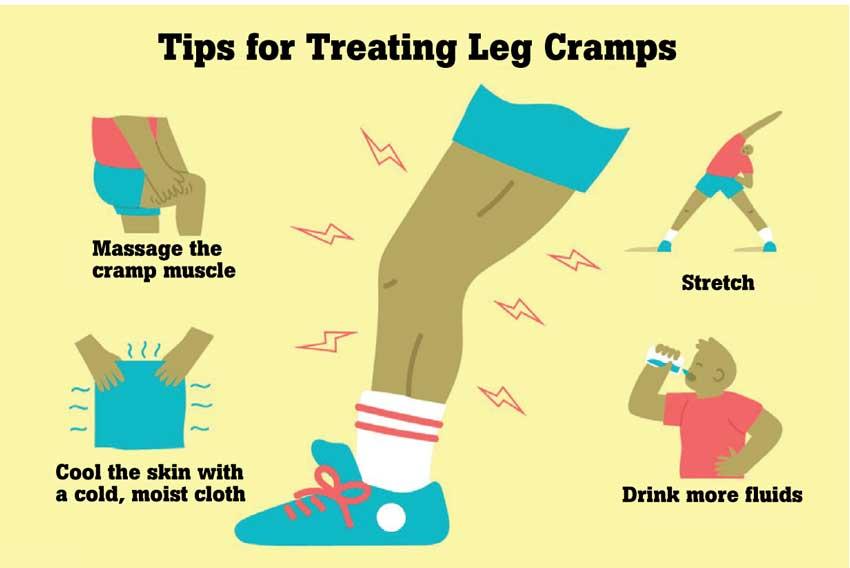Reply To:
Name - Reply Comment

 Cramps are painful episodes due to sudden, intense, involuntary contraction of muscle or muscle groups; usually lasting for few minutes followed by tenderness and discomfort which might persist for few hours. Calf muscles and small muscles of the foot are the commonest sites for cramps to occur. Elderly people are found to be more vulnerable to cramps. The term ‘nocturnal’ is used to define cramps which specifically occurs at night.
Cramps are painful episodes due to sudden, intense, involuntary contraction of muscle or muscle groups; usually lasting for few minutes followed by tenderness and discomfort which might persist for few hours. Calf muscles and small muscles of the foot are the commonest sites for cramps to occur. Elderly people are found to be more vulnerable to cramps. The term ‘nocturnal’ is used to define cramps which specifically occurs at night.
Etiology and presentation
Although the exact reason for cramps to occur is quite uncertain, Diabetes Mellitus, peripheral vascular disease, electrolyte imbalances including lack of Calcium, magnesium, Potassium, thyroid diseases, uremia, medicines like diuretics, nifedipine, β-agonists, steroids, morphine, cimetidine, penicillamine, statins, lithium and vigorous unaccustomed exercises are known to be playing a significant role. Additionally, ‘Squatting hypothesis’ suggests that the modern practice of sitting at rest or toilet unlike squatting- like how our ancestors used to do- has resulted in the shortening of muscles and tendons along with inadequate stretching-of muscle fibres. Neurophysiological and electromyographic studies suggest that the spontaneous firing of certain groups of anterior horn cells followed by contraction of multiple motor units at very high rates can lead to cramps.
Pain and tenderness during muscle cramps are either due to the accumulation of toxic metabolites or focal ischemia in which affected muscle groups run out of blood supply; yet most of the nocturnal leg cramps occur without any insufficiency in arterial blood supply.
Even though nocturnal leg cramps are benign and transient, the entire phenomenon can be pretty distressing and cause sleep disturbances, especially when it happens frequently without any identifiable etiology.
A diagnosis of exclusion
Once a patient presents with symptoms suggestive of nocturnal leg cramps, we take a complete history especially with details on comorbidities along with a thorough examination in order to exclude other conditions with similar patterns like simple muscle strain, dystonias, ischaemic or neuropathic claudication, nerve root disease, restless leg syndrome and nocturnal myoclonus. Intense pain lasting from seconds to ten minutes, location in calf or foot, location seldom in thigh or hamstrings, persistent subsequent pain, sleep disruption and distress are known to be the diagnostic features of NLC.
However, cramps due to malfunctioning muscles or nerves are not just restricted to nights, so if in doubt, further investigations like creatinine phospokinase, electromyography and nerve conduction studies can be carried out in order to exclude serious illnesses.

Prevention and cure
Practising a good sleep hygeine, adequate hydration and avoiding caffeine and alcoholic beverages before sleep play a major role in preventing nocturnal leg cramps. According to certain studies passive stretching of calf muscles, three times a day for several days have shown remarkable benefits in preventing cramps. This can be done by standing two to three feet from a wall, leaning against it with arms outstretched and gently tilted forward with the heels kept firmly in contact with the floor until a non-painful stretch is felt in the calves. This position is supposed to be maintained for 10 seconds and repeated in 5 second intervals for a satisfactory out come. Also, raising the head of the bed and raising the feet on pillows are known to be effective, even though this posture might be pretty difficult in achieving a comfortable sleep.
During an episode of painful involuntary muscle twitching, the best way to cope up is to keep the knee extended while bending the foot forcibly at the ankle towards the body (dorsiflexion). Massaging or passive stretching of the involved muscles will also help to relieve the pain and discomfort.
However, drug therapy for nocturnal leg cramps is indicated when cramping episodes are frequent, severely painful or not responding to afore-mentioned conservative approaches.
Take home message
Nocturnal leg cramps are common in elderly.
Can easily be prevented by avoiding causative agents and with righteously practised exercises.
In non-resolving situations disrupting your quality of life, always seek medical advice because modern medicine always carries modern solutions for most of the existing pathologies.